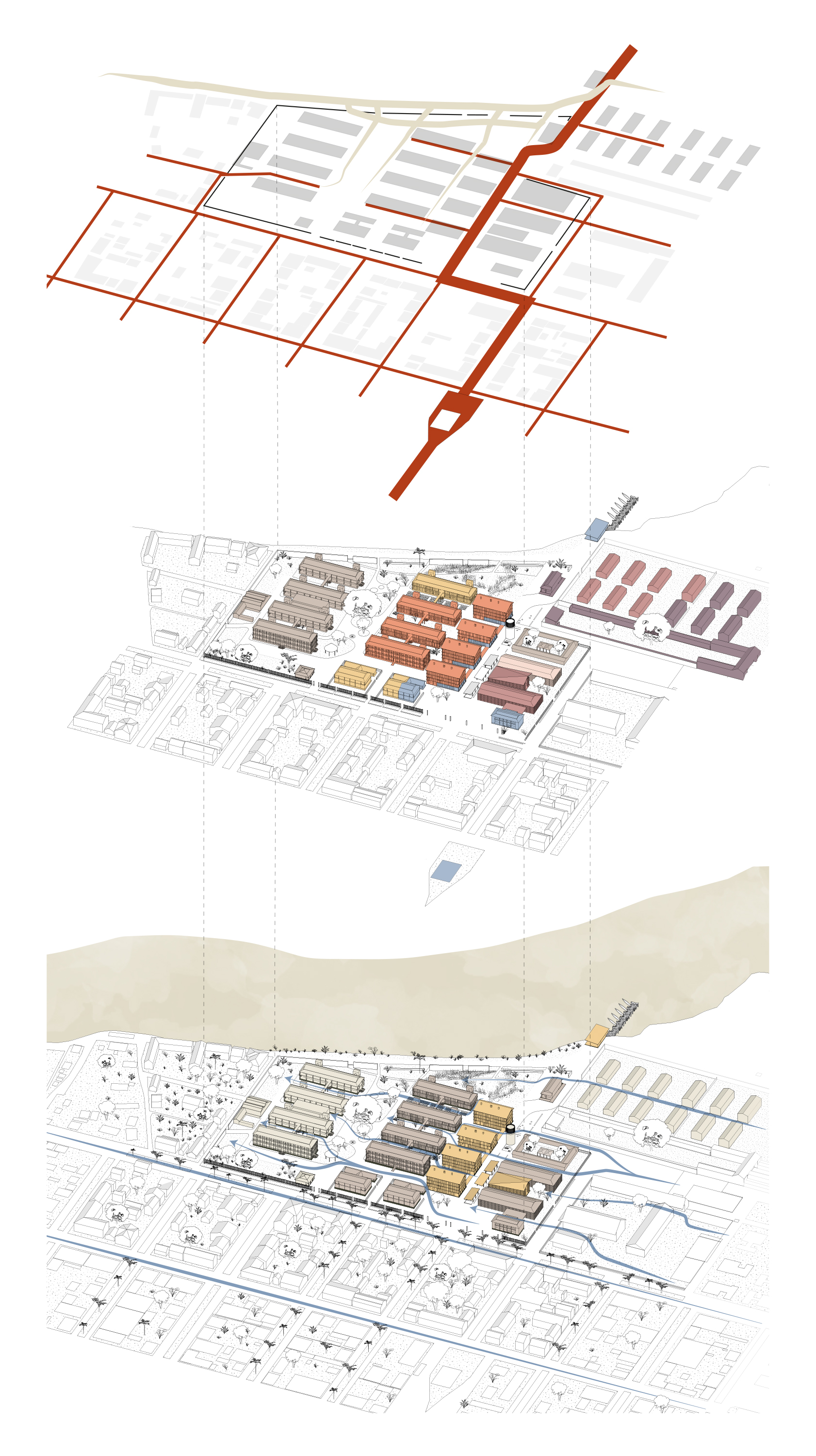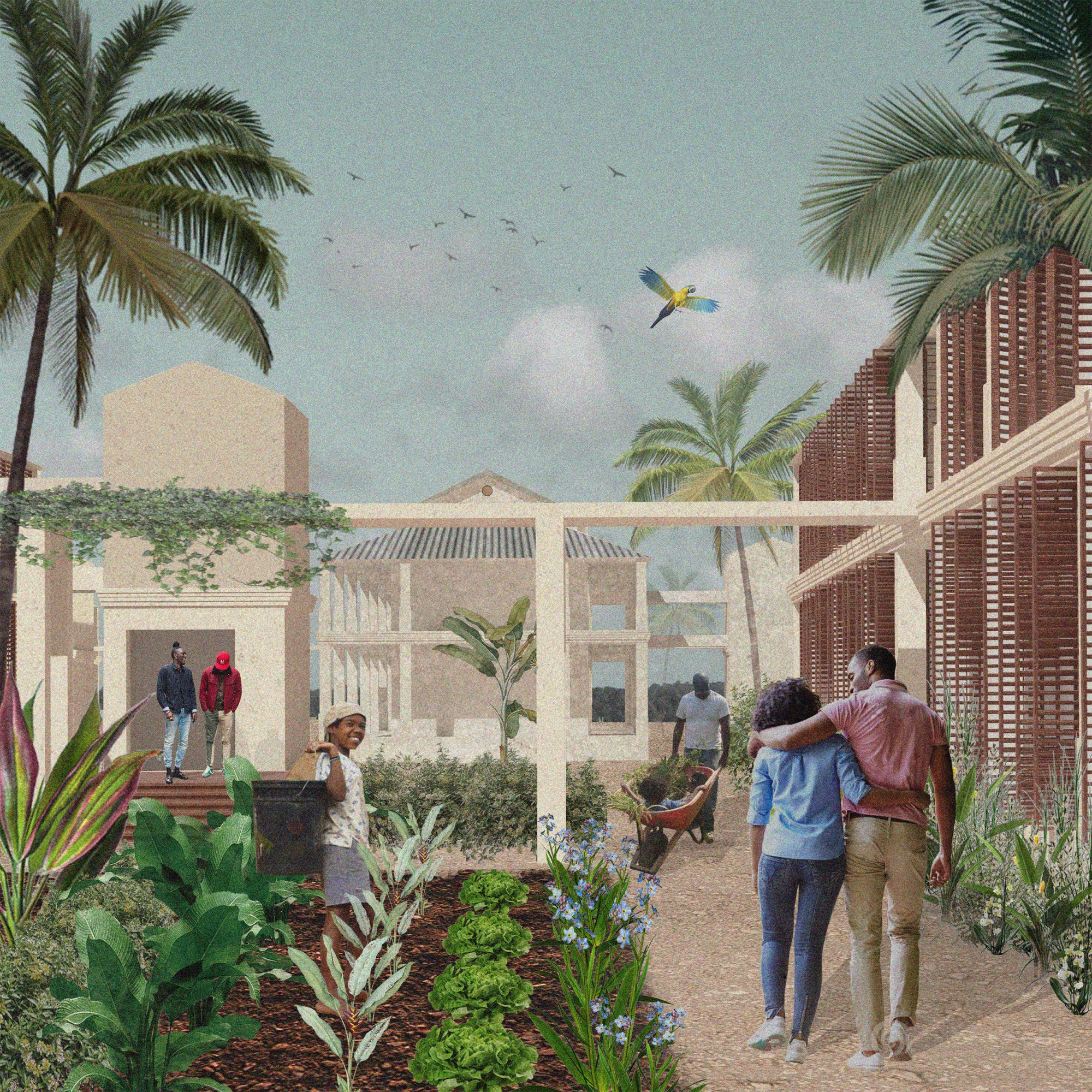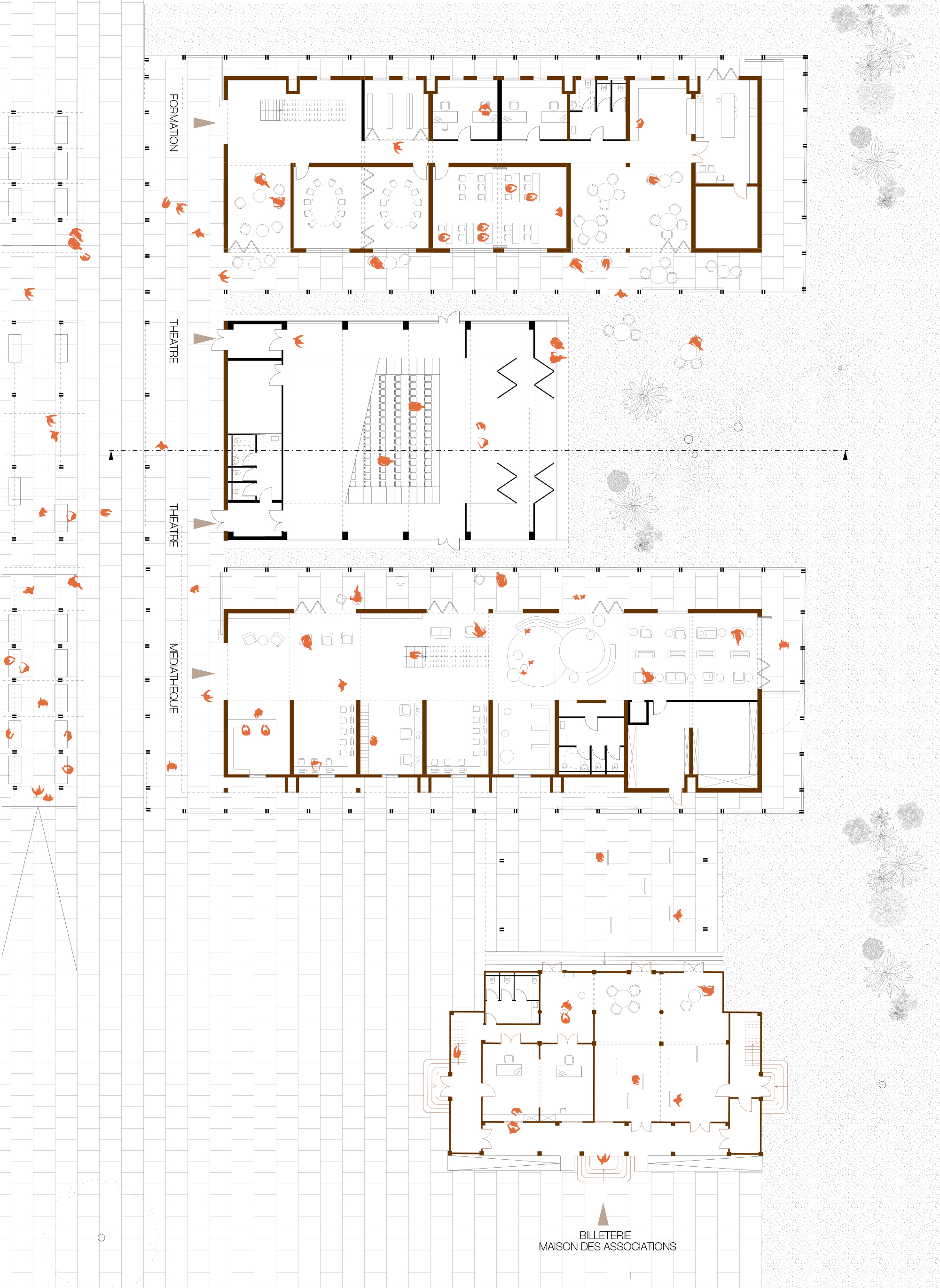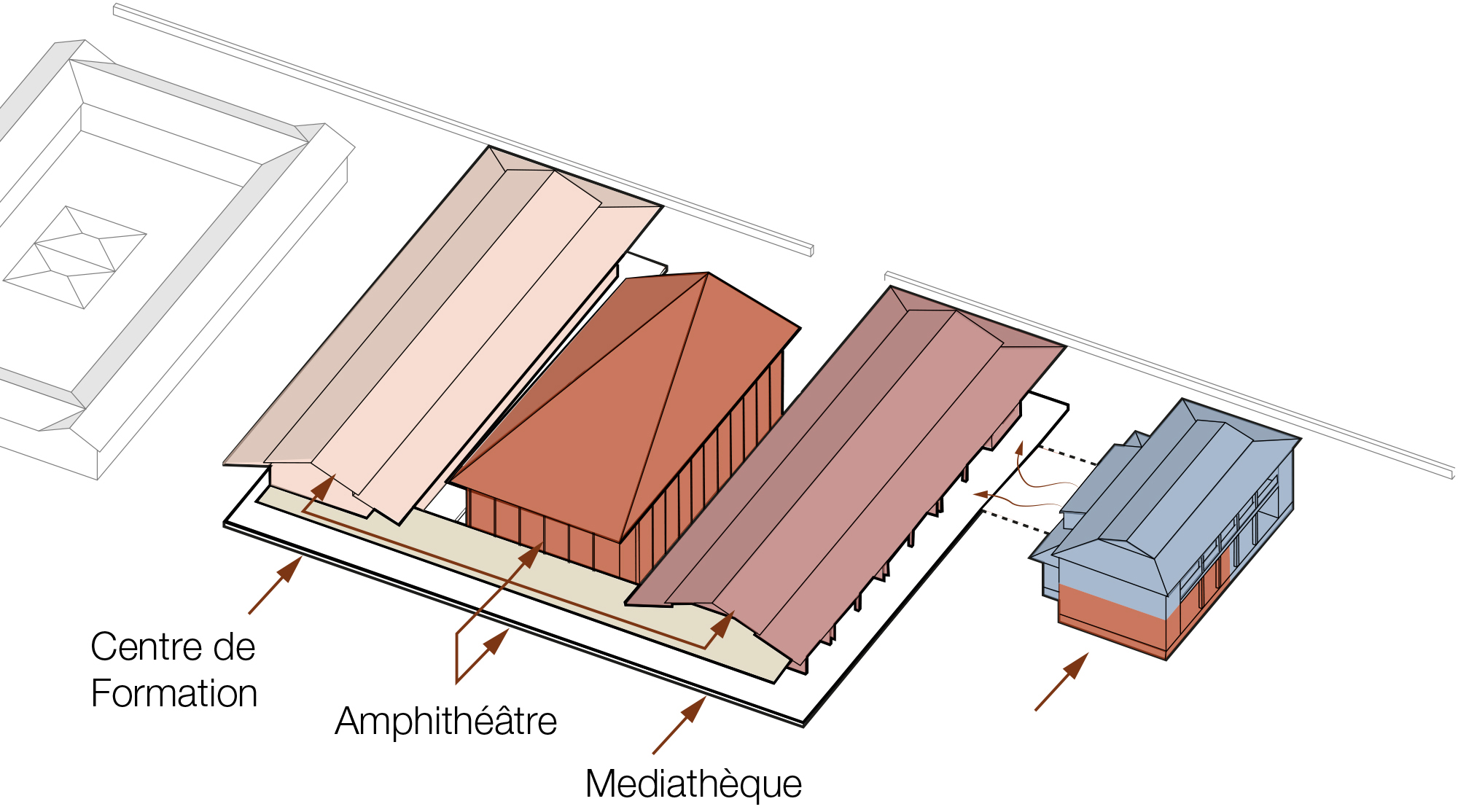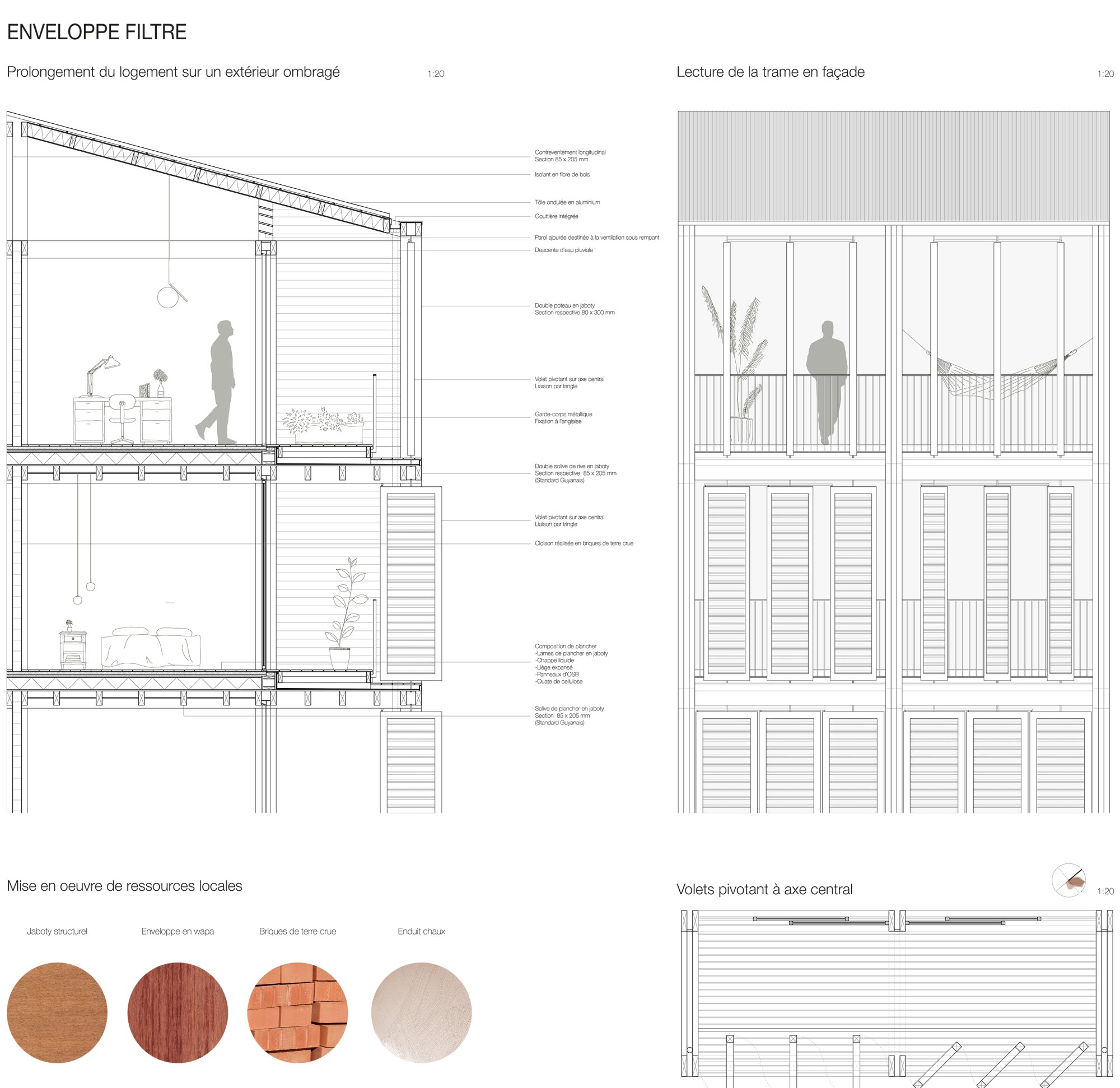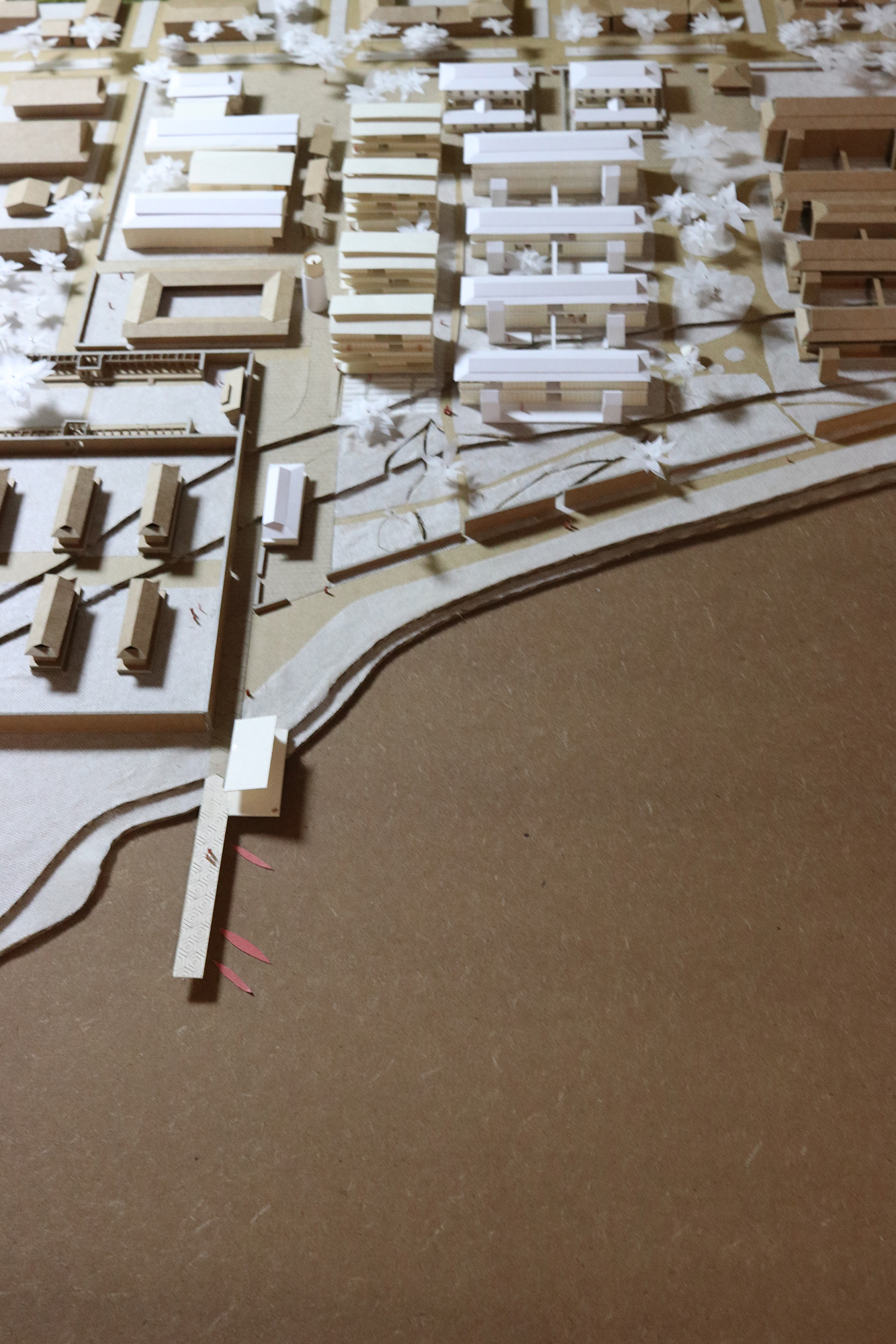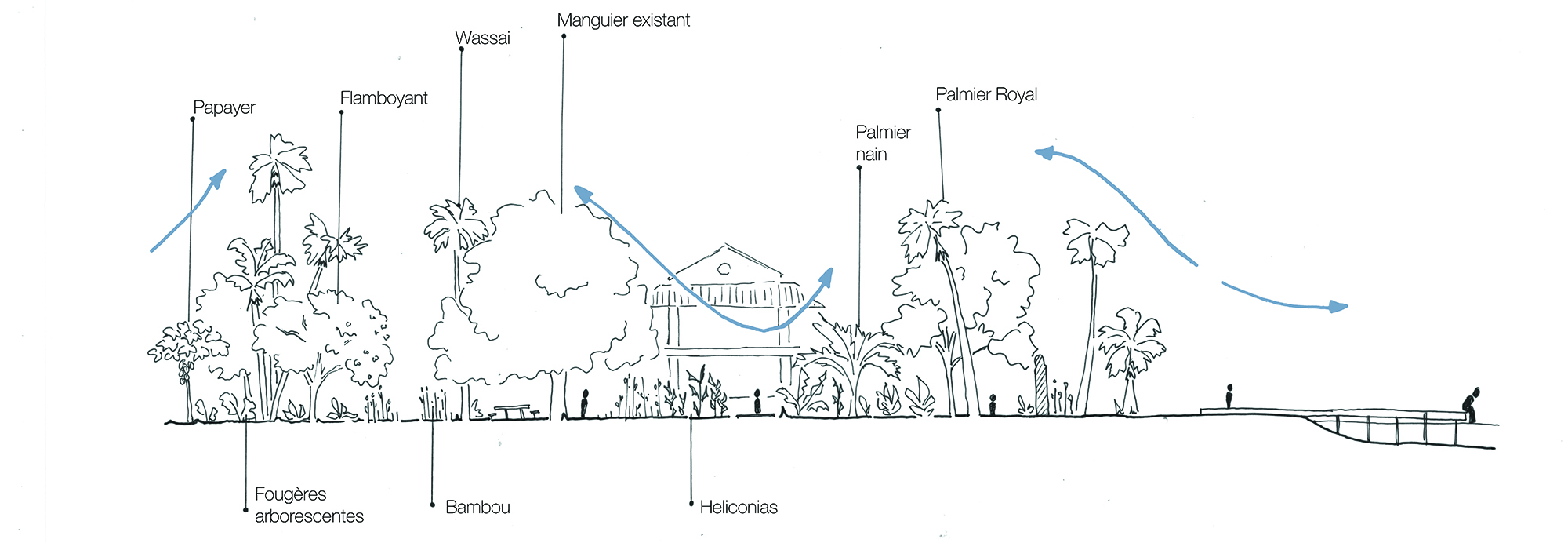Anne-Laure DESCHÂTRES
Reconversion de l’hôpital André Bouron
Située à l’extrême ouest de la Guyane française à la frontière avec le Suriname, Saint-Laurent du Maroni est une ville française en Amazonie. Véritable bassin de vie plus que frontière, le Maroni est au cœur de la culture et de la vie saint-laurentaise ; le fleuve est un lieu d’échanges économiques et de mobilités quotidiennes avec Albina, la ville jumelle surinamaise. Saint-Laurent du Maroni est caractérisée par une grande diversité culturelle, intrinsèquement liée aux différentes vagues d’immigrations connues par le territoire guyanais. Si cette immigration fait la richesse culturelle de la mosaïque guyanaise, elle est aujourd’hui la principale cause d’une croissance démographique sans précèdent. Actuellement deuxième plus grande ville de Guyane avec environ 50 000 habitants recensés, Saint-Laurent du Maroni devrait voir sa population presque tripler d’ici dix ans et atteindre 135 000 habitants en 2030.
Le projet propose de s’intéresser à l’avenir du centre-ville de Saint-Laurent du Maroni, dont le bâti patrimonial, fondateur de la ville, a été peu à peu abandonné depuis la fermeture du bagne. Saint-Laurent du Maroni est considérée jusqu’au milieu du XXe siècle comme la capitale française du bagne. Elle a été construite autour et par ce bagne où ont été envoyés des dizaines de milliers d’hommes et de femmes pendant plus d’un siècle. L’ancien hôpital André Bouron construit en limite du camp avait ainsi vocation à soigner les bagnards et les populations civiles. Son activité a cessé en 2018, laissant inoccupé cet élément central du patrimoine saint-laurentais. Enclave murée et classée faisant front entre ville et fleuve et mitoyenne du bagne, ce patrimoine remarquable de l’architecture coloniale saint-laurentaise devient alors un site porteur d’enjeux et d’espoirs.
A travers la reconversion de ce site, il est ainsi question d’ouvrir la ville sur le Maroni. Il s’agit de créer de l’espace public dans une enclave au passé hospitalier et pénitentiaire. Le projet propose de se confronter à l’enjeu de dynamisation du centre-ville de Saint-Laurent du Maroni via un maillage du territoire s’appuyant sur des éléments historiques, paysagers et sur une mixité programmatique. Il s’agit aussi de confronter la question de la densité souhaitée par la ville pour faire face à sa croissance démographique à celle de la réhabilitation du patrimoine architectural et urbain classé que représente l’hôpital.
Comment concilier esprit des lieux et inscription du site dans les enjeux de développement urbain de demain ? Comment pourrait-on transformer et réinterpréter les dispositifs urbains et architecturaux de l’ancien hôpital colonial pour imaginer le devenir de ce site en phase avec les nouveaux usages projetés ? Comment la prise en compte des caractéristiques du climat équatorial pourrait-elle orienter cette réflexion ?







